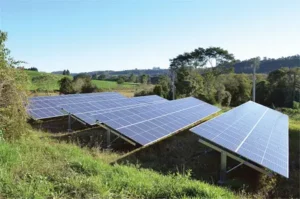TheGazette-Virginianreports
that the town of Halifax is considering its first solar project. The proposed facility would occupy 46 acres on an 85.8-acre parcel. Town Councilman Jack Dunavant made his position clear: “Personally, I don’t think we should allow solar farms within the town limits of Halifax. I like solar energy, but I don’t want it somewhere in my front yard or my back yard. It ought to be out in the country.”
solar project. The proposed facility would occupy 46 acres on an 85.8-acre parcel. Town Councilman Jack Dunavant made his position clear: “Personally, I don’t think we should allow solar farms within the town limits of Halifax. I like solar energy, but I don’t want it somewhere in my front yard or my back yard. It ought to be out in the country.”

Leave a Reply
You must be logged in to post a comment.